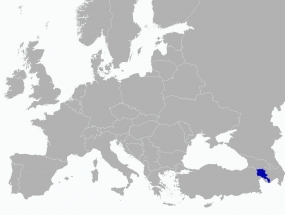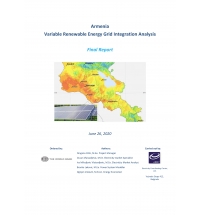Armenia Variable Renewable Energy Grid Integration Analysis: • Hourly Dispatch Simulation (Phase I) • Balancing and Reserve Analysis (Phase II)
Client: The World Bank
Finishing date: May 2020 (Phase I), June 2020 (Phase II)
Type: Study (Market, Generation, Renewables)
Team: Dragana Orlic - Project Manager, D. Vlaisavljevic, B. Lekovic, O. Vukovic, I. Mihajlovic-Vlaisavljevic
Phase I, Phase II:
The main goal of this activity is to assess the ability of the electricity system of Armenia to manage the variability of renewable energy sources from the perspective of the adequacy of the power system and balancing. Phase I focused on system flexibility and adequacy and Phase II on balancing.
Based on Armenian power system models for the year 2025, 2030, and 2035 generation hourly dispatch simulations have been carried out for several different VRE development scenarios (3) with the aim to determine:
- Impact on wholesale prices and implications for consumers (tariff increases)
- Impact on traditional generators including generation costs, utilization level, number of start-ups/shut-downs;
- Ramp requirements and availability of generation units to meet the requirements;
- Minimum load constraint and technical and economic impacts of reduced output of conventional generation plants;
- Curtailments of renewable generation outputs
The analyses also included assessment of the adequacy indicators (LOLE, LOLP and ENS)
In Phase II, the study focused on the technical and economic impacts of the integration of renewable energy sources into the Armenian power system from the aspect of balancing, reserve and regulation of the power system with dimensioning of the required reserve in conditions of increased RES construction.
For different RES development scenarios, the balancing of the power system and provision of reserves with the identification of potential measures to improve RES integration were tested, including flexible production sources, batteries, interconnections, regional market integration, balancing and cooperation with neighboring countries, advanced RES production forecast. Potential measures were tested in hourly simulation models and a cost-benefit estimate was given for the selected measures.
Professional and commercial packages - Antares and Plexos - were used for this analysis.
Type of services provided:
Phase I, Phase II:
- Development of the power system model in Antares sw tool
- Analyses of the system operation in 2025, 2030 and 2035 in differenrt Scenarios
- Implementation of the MonteCarlo simulations for different climatic, hydrological and thermal availability conditions
- Calculation of system operation and adequacy indicators
- Determination of the hourly time series of wind/solar deviations in Plexos based on predefined target deviations
- Balancing reserve (aFRR,FRR) dimensioning
- Calculation of balancing costs for different VRE development scenarios
- Calculation of economic indicators (IRR, NPV)


